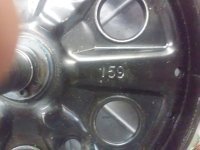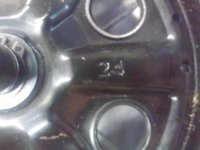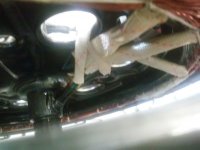Ethan102
10 mW
Wesnewell: Alright, well I just realized that on the wiki there is a sort of flow chart below the first flow chart for testing the sensors and phase wires. So I will try all those combos tomorrow.
nutspecial: alright I will keep those suggestions in mind for if all else fails. ahh yes I forgot that happened. In the pic that is a burn mark from after I opened the controller to take pics. I dropped my tiny screwdriver and it shorted right on the shunt and the copper sticking out. It was quite a big spark and scared the $#@! out of me. How would I go about measuring the draw using the multimeter? Also is it normal for the motor to still spin even with the hall sensor unplugged? and I noticed on the hall sensor that the red wire from the controller was going into the black wire on the motor, and the black wire from the controller was going into the red wire on the motor. is that normal or are they switched?
Nelson37: Yeah the flow chart on the wiki should help me with being methodical. I will just need to be patient and spend some time.
Thanks y'all for your help. This thing is quite a pain (literally) and I would never have had any chance of figuring it out. I feel like we are getting close.
nutspecial: alright I will keep those suggestions in mind for if all else fails. ahh yes I forgot that happened. In the pic that is a burn mark from after I opened the controller to take pics. I dropped my tiny screwdriver and it shorted right on the shunt and the copper sticking out. It was quite a big spark and scared the $#@! out of me. How would I go about measuring the draw using the multimeter? Also is it normal for the motor to still spin even with the hall sensor unplugged? and I noticed on the hall sensor that the red wire from the controller was going into the black wire on the motor, and the black wire from the controller was going into the red wire on the motor. is that normal or are they switched?
Nelson37: Yeah the flow chart on the wiki should help me with being methodical. I will just need to be patient and spend some time.
Thanks y'all for your help. This thing is quite a pain (literally) and I would never have had any chance of figuring it out. I feel like we are getting close.






